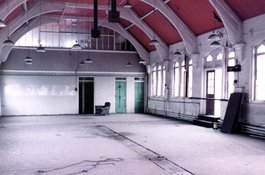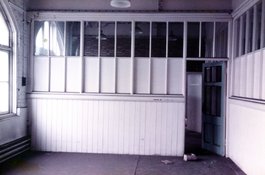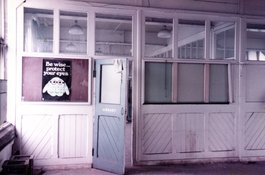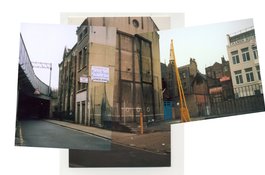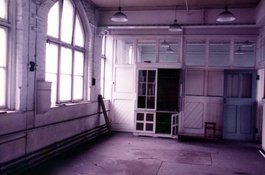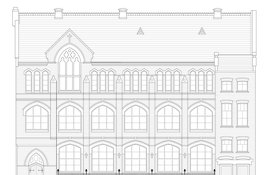A decade of change around Chamber Street
Contributed by Survey of London on March 27, 2018
Oliver Barry in conversation with Sarah Milne on 23 March 2018:
"I've been aware of Whitechapel for quite a number of years as a venue or a place for our ministry as a congregation. That goes back into the 1850s. I came here in 2011, with the idea of re-starting this house on Chamber Street as a retreat and spirituality centre, a Catholic retreat centre attached to the church on Prescot Street. I worked on the refurbishment of this building and then our aim was to be ready for the Olympics in 2012. We were just about ready [in time]! So we had a few little connecting points with the Olympics, just taking people in, an example would be a man who was working as a massage therapist for the athletes stayed with us, someone who was a chaplain stayed with us…that sort of thing. So then from 2012 it was just developing this centre as a retreat centre and being involved in the church on Prescot Street as part of the team there.
We're part of a religious congregation that is called the Oblates of Mary Immaculate. That goes back to the 1820s in terms of its foundation, but in relation to here, [it goes back to] the 1840s, so I had an awareness…of the place that Tower Hill has had in the history of our congregation over that period of time [prior to my arrival in 2011]. I personally have been aware of [the Whitechapel ministry] since the day I joined the congregation, but because it had gone through a period of decline, and there was a possibility of everything closing down really, because the area was a bit of a derelict area and nothing happened at weekends because it was the fringe of the City. So it was busy during the week but then people moved away and there was very little residential accommodation. It was a deserted zone. This was pre-2000s. As you come into the 2000s it began to rejuvenate, that's my sense of it anyway. When you look at some of the photographs of the street in the pre- 2000s, where the Grange Hotel is, that was just an old bombsite. [Since then] big developments…have gone on along Leman Street and the other things…are going on now…like the Royal College of Psychiatrists.
When my colleague came here, which was nine years ago, one of the things that he constantly reminds us of was that there were no shops. We have Tescos and Sainsburys now, but for him to do any shopping, he had to go down as far as Monument. There was a little cornershop over the back of Tenter Street, but it was only a little...you couldn't do your shopping on it. That was nine years ago. It's changed dramatically. It's changing before our eyes really. And this street is changing even though it's a back street. Over the next few years it will change phenomenally, with the development on Royal Mint Street, which will open up onto this street through the arches. Then there is another predicted for a site maybe a hundred yards up the road here, at the back of the College of Psychiatrists. The planning permission was for apartments. It will probably have offices on the ground floor and apartments above."
